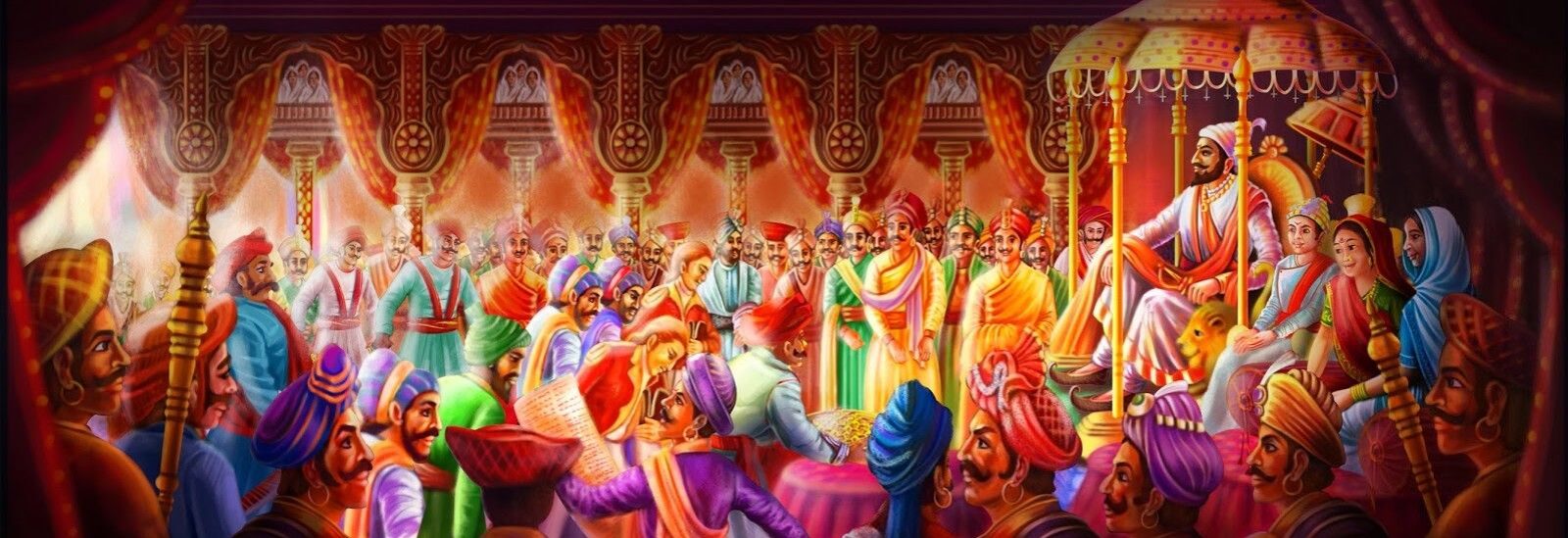Taxes such as personal income tax, business tax, property tax were collected by district and village Vatani officials. But it is doubtful that these taxes should have been collected regularly. Sometime, the government used to collect a consolidated tax called ‘Sadilwarpatti’ (सादिलवारपट्टी). This included taxes such as inampatti, miraspatti, mohatarfa, lagnataka, imaratpatti etc.
Direct taxes are as under:
Inampatti (Tax on Prize/Gift):
The land given to the Inamdars is free of charge/fees. This tax was collected in place of charge/fees. But Gosavi, Mathadhikari did not have to pay this tax.
Miraspatti:
Mirasdar means the owner of the land in the village. He was a kind of patriot/Vatandar. Miraspatti means that a portion of the income or profit of the Mirasdars which was collected by the Government in the form of tax. This amount was collected only from Deshmukh, Deshkulkarni, Patil and Kulkarni of Mawal area. Ramachandra Amatya in his edict says,
‘राजाने प्रत्येक वर्षाच्या शेवटी किंवा दोन वर्षांनंतर वतनदाराकडून कर गोळा करावेत.’
Translation:
‘The king should collect taxes from the vatandar at the end of every year or after two years.’
Business Tax:
This tax was levied on a person’s business. This tax was collected in goods and/or cash.
Sarafpatti:
This tax was levied on gold and silver business.
Dhangarpatti:
At that time, Dhangar used to do things like rearing goats and sheep, selling wool, preparing and selling blankets and pasedis (पासेडी), and this tax was imposed on their businesses.
Telpatti:
This tax was collected from oil seller.
Hejibpatti:
If the villagers sent their representative to the government for village work, the amount required for his expenses was collected from the villagers.
Sinhasanpatti:
This tax was levied on the Vatandars during Shiva’s coronation in 1674 AD.
Vethbigaari:
Getting work done by skilled workers at below market rates. The employment of hereditary officials by such people was considered a special income.
Magtakka:
This tax was collected from the weaver (विणकर). This tax was accepted in cash and/or in goods. In cash 1/4 takka rate per mag or a sari or a dhoti or a patka in goods was collected from tailors as a tax
Paiposi:
This tax was collected from the tanner. Every year Patil and Kulkarni had to add one pair of slippers.
Karagirivaril kar :
A tax was collected from village artisans such as Parit, Carpenter, Tailor, Barber, Goldsmith, Blacksmith, Taral, Chambhar, Kumbar, Mang, Koli, in the amount of pav taka.
Mohatarfa:
Tax collected from traders. This tax was collected from the village officials or people in goods and/or cash. It included kirana bhusar traders, clothiers, shopkeepers, fruit sellers, vegetable sellers, khatiks. Some of them take permission to sit in the weekly market by paying some tax to the Deshmukh.
Continue reading with Part XIII
or goto Part I, Part II, Part III, Part IV, Part V, Part VI, Part VII, Part VIII, Part IX, Part X, Part XIV, Part XV, Part XVI, Part XVII, Part XVIII


Pingback: Revenue System (Part XVII- Other Revenue 2) – Chatrappati Blogging
Pingback: Revenue System (Part XIII – Indirect Tax) – Chatrappati Blogging
Pingback: Revenue System (Part II – Taxation System) – Chatrappati Blogging
Pingback: Revenue System (Part XIV- Other Taxes) – Chatrappati Blogging
Pingback: Revenue System (Part XI – Tax Structure – Introduction) – Chatrappati Blogging